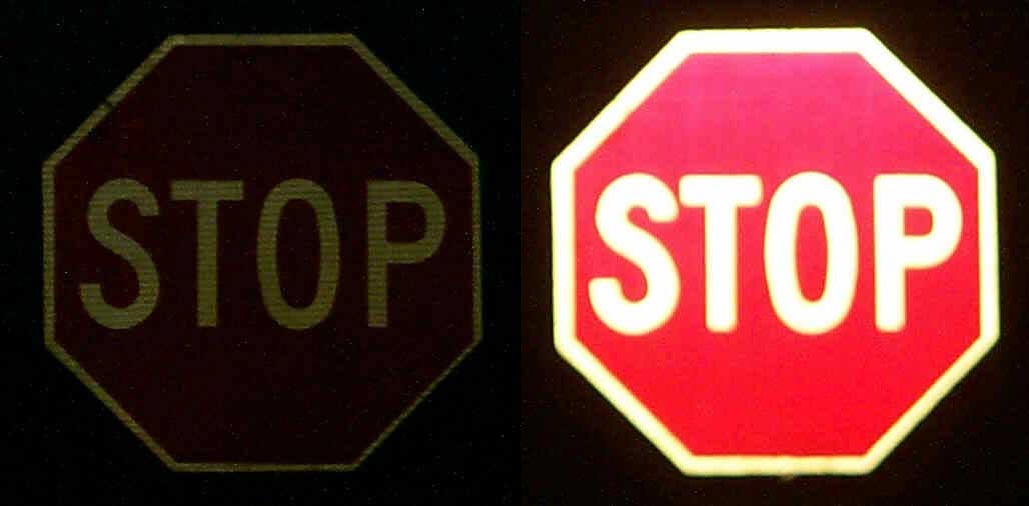The term retroreflectivity refers to the ability of a device or surface to reflect light back to its source with a minimum scattering of light.Traffic signs serve vital functions, providing road users with regulatory, warning and guidance information about the roadway and surrounding environment. There are a large number of signs and even more guidelines on how these signs should be designed, installed and maintained. These guidelines are contained in a document called the Manual on Uniform Traffic Control Devices, or MUTCD. The guidelines in this document address appearance (size, shape, color), placement (height, lateral, and longitudinal) and maintenance (visibility, position, damage). One of the MUTCD requirements for signs is that they be made from retroreflective materials or that they have sign lights. Virtually 100 percent of modern signs are manufactured from retroreflective sheeting, which makes these signs visible at night. However, retroreflective sheeting deteriorates with time.
TTI researchers, such as Gene Hawkins, have played a significant role in the development of those guidelines and MUTCD guidelines through a series of research projects on minimum sign retroreflectivity for the FHWA. These projects have focused on identifying how much light signs need to reflect for drivers to see them at night and on working with transportation professionals about implementing the research into practice.

Over time, the retroreflectivity of a sign decreases, making it less visible for nighttime drivers.

